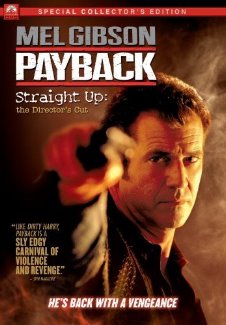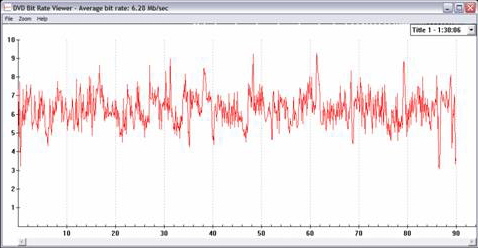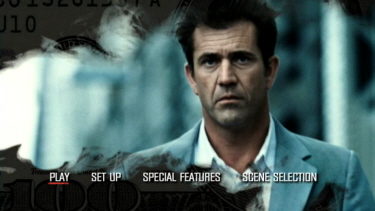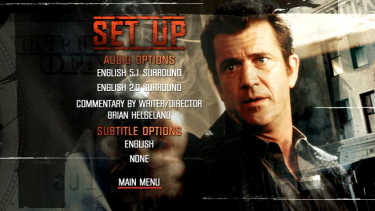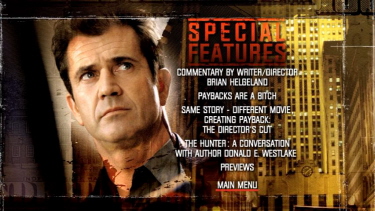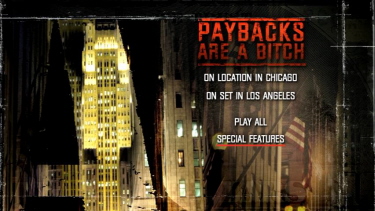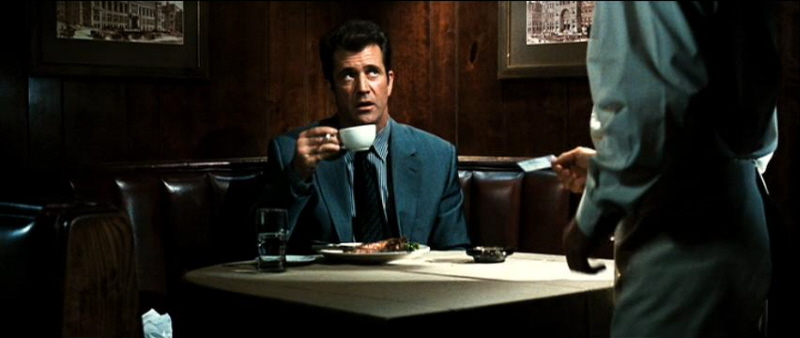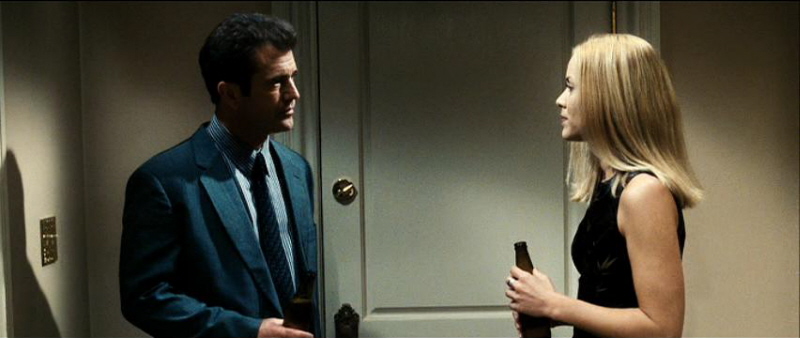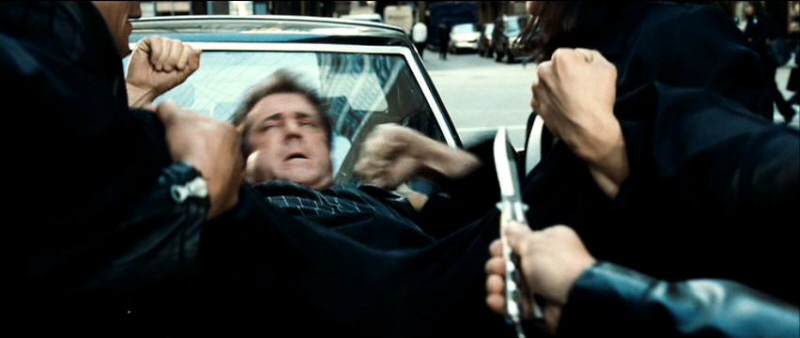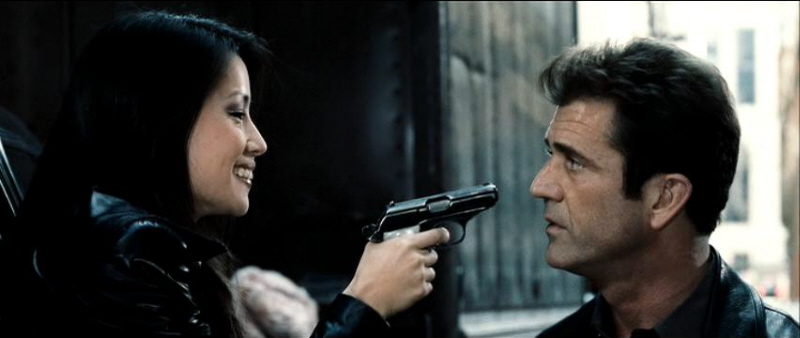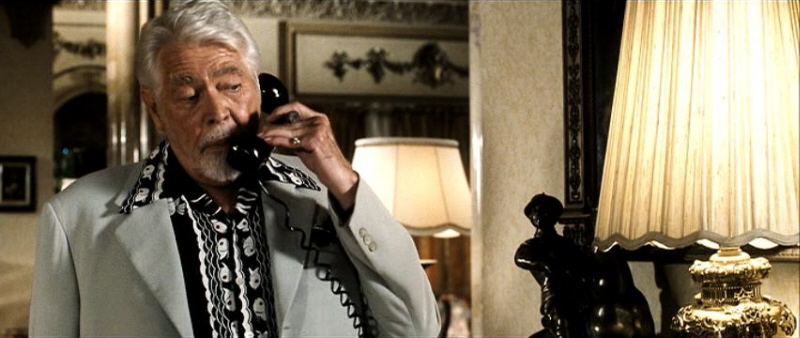|
1997 was a big year for Brian Helgeland.
After years of toiling as an anonymous screenwriter, he hit the jackpot.
He wrote
Conspiracy Theory, a big summer action movie directed by
Richard Donner (the Lethal Weapon series) starring Mel Gibson and
Julia Roberts. He wrote The Postman, a big epic produced by,
directed by, and starring Kevin Costner before the world concluded that
Costner was a has-been. Helgeland also co-wrote
L.A. Confidential,
a movie that has grown in stature during the past ten years. James
Cameron’s Titanic is now a cliché, but
L.A. Confidential
re-freshed film noir for a new generation. Helgeland and Curtis Hanson
won the Best Adapted Screenplay Oscar for
L.A. Confidential.
In the middle of his whirlwind year, Helgeland showed a spec script that
he’d written on his own time to Mel Gibson, who liked it enough to
greenlight the movie via his production company. The story appealed to
Gibson’s sensibilities so much that he agreed to play the lead. Things
seemed to go swimmingly until Paramount and Warner Bros. decided that
Payback, as envisioned by Helgeland, was too dark and hard-bitten.
Helgeland didn’t accommodate the studios’ demands, so he was booted from
his own project.
There are rumors that John Myhre, usually a production designer, was
recruited to direct new scenes for the movie, though one can see Mel
Gibson’s fingerprints all over the theatrical version. Gibson won two
Oscars for 1996’s Braveheart, and he was a veteran of the studio
system. Why wouldn’t Paramount and Warner (both had long working
relationships with him) ask Gibson to salvage a movie starring him? The
theatrical version uses a voiceover narration by Gibson, and given his
predilection for violence and suffering, there is no doubt that having
the villains smash his character’s toes with a hammer was either
Gibson’s idea or something that he embraced with gusto. (Gibson
regularly focuses on extreme pain, from popping an arm back into a
shoulder socket in Lethal Weapon 4 to the non-stop orgy of blood
in Apocalypto. Braveheart and The Passion of the Christ
were paeans to Catholic suffering.)
In Payback, Porter’s wife and an associate double-cross him after
a robbery. They leave him for dead, but he comes back to town for his
share of the money--$70,000. He runs into an assortment of thugs who
think that he wants $130,000 or has access to much, much more funds.
Along the way, he gets caught between a Chinese gang, a Chinese
dominatrix, crooked cops, and a hooker. They all can’t figure out why
Porter goes through a lot of trouble for just $70,000. The thing is, as
rotten as Porter is, Brian Helgeland envisioned him as romantic
anti-hero with a personal code of honor. Porter’s curious quest for
$70,000 (when the stakes are obviously worth more than the desired sum)
keeps a grip on the viewer’s interest, though because Payback is
a genre exercise, there is no “message” at the bottom of it all. What
you see is what you get, and sometimes, that’s enough to entertain.
The Director’s Cut removes the voiceover narration and does not have the
bluish industrial tint of the theatrical version. Helgeland also made
minor trims and additions throughout the first two thirds of the movie,
including removing a sequence showing a doctor taking bullets out of
Porter’s back. The biggest change is the final act. The Director’s Cut
jettisons an extra subplot that appears in the theatrical version.
Subsequently, the Director’s Cut is about ten minutes shorter than the
theatrical cut. Porter arranges a money drop-off at a train stop, and
the movie proceeds from there to an ambiguous ending. While the
Director’s Cut’s tone is “bleaker” than the theatrical version’s tone in
some regards (Porter beats up his wife, a dog is killed, and we don’t
know if Porter lives or dies), I don’t think that the Director’s Cut is
“darker” than the theatrical version. The theatrical version is plenty
nasty, and the toe-smashing incident remains an iconic moment in Mel
Gibson’s gallery of ghastly tortures.
The truth of the matter is that the behind-the-scenes events surrounding
Payback are far more interesting than the movies themselves. Both
versions have a bouncy energy courtesy of Mel Gibson’s screen persona,
though I suspect future generations won’t “get” Gibson the way that
today’s people don’t always “get” what made pre-1970s stars tick. In and
of themselves, the two Paybacks are no more than
solidly-constructed potboilers, but I’d imagine that teachers could use
the DVDs for a variety of lessons, from story writing/construction to
editing, from demographics testing to Hollywood power plays. As far as
double-dips go, Payback: Straight Up (The Director’s Cut) offers
a revelatory look at when artistic and commercial sensibilities collide.
David McCoy |
![]()
![]()

![]()
![]()

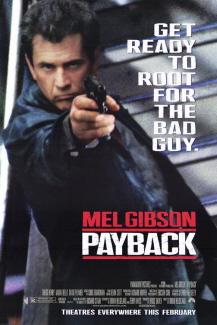
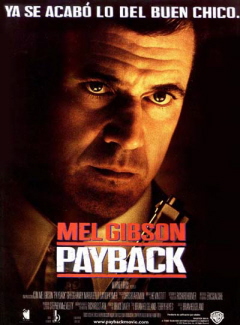
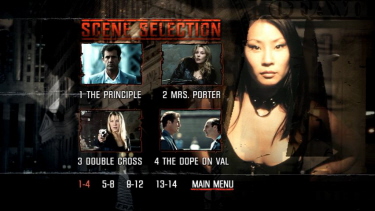
![]()
![]()
![]()
![]()


